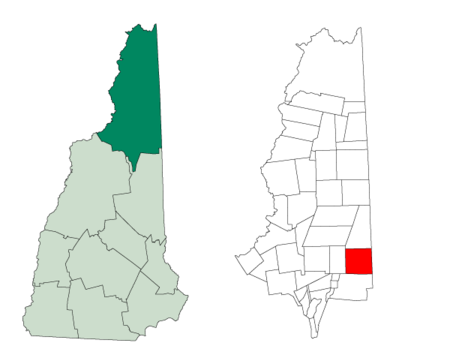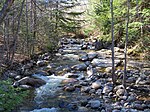Shelburne, New Hampshire
Berlin, New Hampshire micropolitan areaTowns in Coös County, New HampshireTowns in New HampshireUse mdy dates from July 2023

Shelburne is a town in Coös County, New Hampshire, United States. The population was 353 at the 2020 census. It is located in the White Mountains, and part of the White Mountain National Forest is in the south. Shelburne is home to Leadmine State Forest. The Appalachian Trail crosses the town. Shelburne is part of the Berlin, NH–VT Micropolitan Statistical Area.
Excerpt from the Wikipedia article Shelburne, New Hampshire (License: CC BY-SA 3.0, Authors, Images).Shelburne, New Hampshire
Village Road,
Geographical coordinates (GPS) Address Nearby Places Show on map
Geographical coordinates (GPS)
| Latitude | Longitude |
|---|---|
| N 44.401111111111 ° | E -71.074722222222 ° |
Address
Village Road 45
03581
New Hampshire, United States
Open on Google Maps







